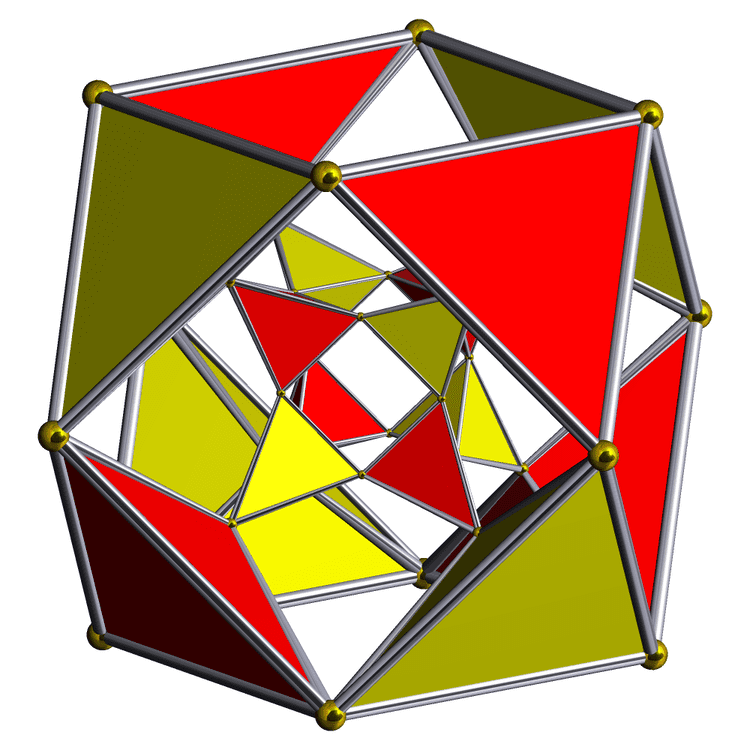 | ||
In geometry, the rectified tesseract, rectified 8-cell is a uniform 4-polytope (4-dimensional polytope) bounded by 24 cells: 8 cuboctahedra, and 16 tetrahedra. It has half the vertices of a runcinated tesseract, with its construction, called a runcic tesseract.
Contents
It has two uniform constructions, as a rectified 8-cell r{4,3,3} and a cantellated demitesseract, rr{3,31,1}, the second alternating with two types of tetrahedral cells.
E. L. Elte identified it in 1912 as a semiregular polytope, labeling it as tC8.
Construction
The rectified tesseract may be constructed from the tesseract by truncating its vertices at the midpoints of its edges.
The Cartesian coordinates of the vertices of the rectified tesseract with edge length 2 is given by all permutations of:
Projections
In the cuboctahedron-first parallel projection of the rectified tesseract into 3-dimensional space, the image has the following layout:
